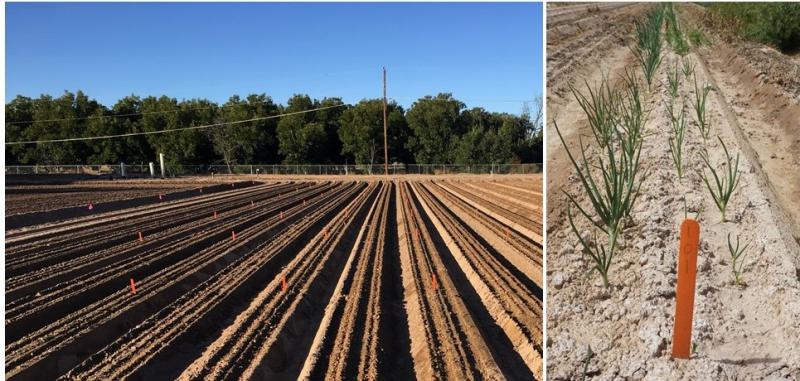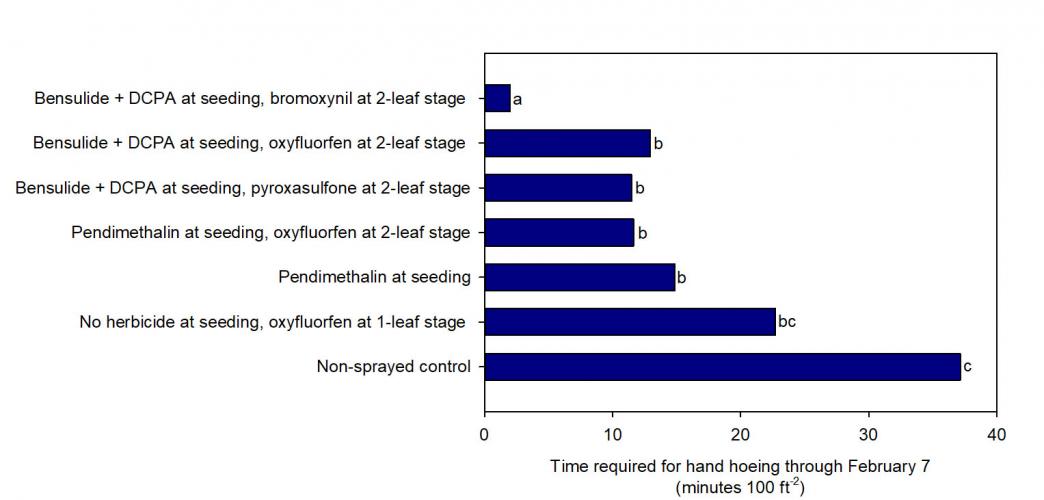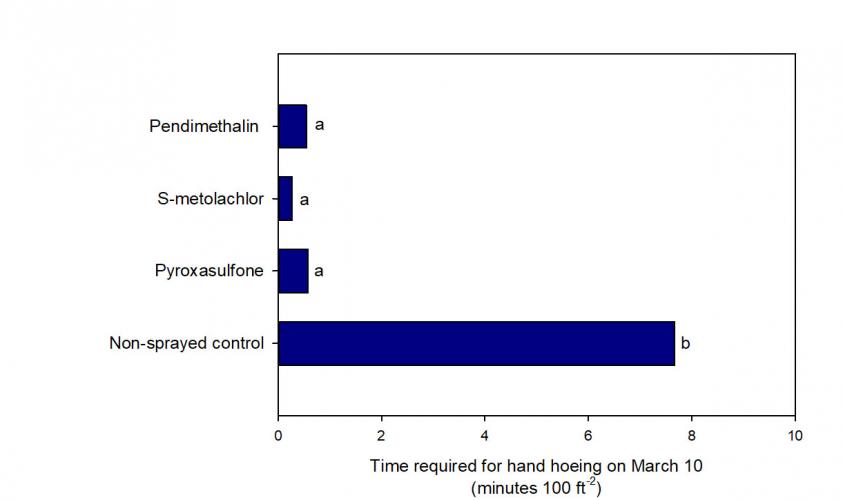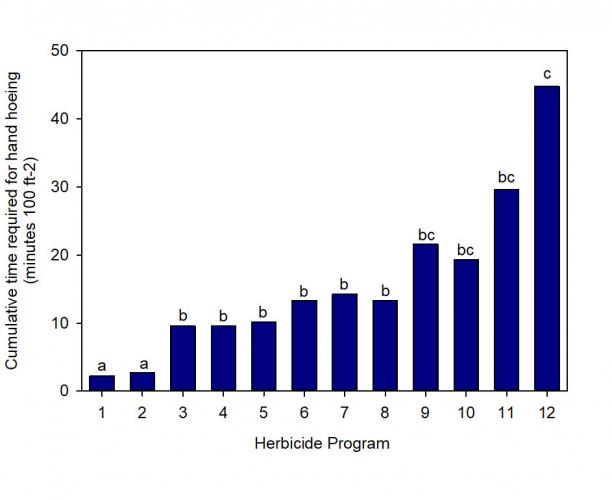Field Study

Procedures
Beginning in Fall 2019, we tested eight herbicides for weed control in onion. These herbicides differed in price and potential environmental impact.
Herbicides were combined to create 11 programs and a non-sprayed control.

Soil at the study site soil was a sandy loam.
Weeds were mostly London rocket and seaside petunia. Additional weeds included Russian thistle and common lambsquarters.
To measure herbicide efficacy, we measured the amount of time for one person to hoe weeds that escaped herbicide applications.
Results
The research is in-progress. This report will present results through March 15.
Fall Herbicides
Soil-applied, residual herbicides at seeding reduced hoe time compared to the non-sprayed control.
Hoe times were similar between the non-sprayed control and the program lacking soil-applied, residual herbicides at seeding.
Hoe times were lowest for the tank mix combination of bensulide + DCPA applied at seeding, followed by bromoxynil applied at the onion 2-leaf stage.

The most expensive herbicides evaluated were bensulide ($90.00 per acre) and DCPA ($123.75 per acre). These herbicides also featured comparatively high potential environmental impact.
Compared to bensulide and DCPA, pendimethalin featured lower cost ($9.00 per acre) and lower potential environmental impact.
Early Spring Herbicides
Pyroxasulfone, pendimethalin and S-metolachlor were equally effective at reducing hoe times in spring.

The least expensive early spring herbicide was pendimethalin ($9.00 per acre). The most expensive early spring herbicide was pyroxasulfone ($16.02 per acre).
Herbicide Program Performance Through Mid-March
Cumulative hoe times were lowest for bensulide + DCPA applied at seeding, followed by bromoxynil at onion 2-leaf stage and S-metolachlor or pendimethalin at the 4-leaf stage.
All herbicide programs with soil-applied, residual herbicides at seeding reduced hoe times compared to the non-sprayed control.
All herbicide programs that lacked soil-applied, residual herbicides at seeding had hoe times similar to the non-sprayed control.


Field Study Conclusions
Weed control programs for onion benefit from soil-applied, residual herbicides at planting. These herbicides differ in cost and environmental risk.
We propose to reduce the cost and potential environmental impact of onion herbicide programs by:
Registering a new use for an old herbicide, pendimethalin
Developing recommendations for a new herbicide, pyroxasulfone.